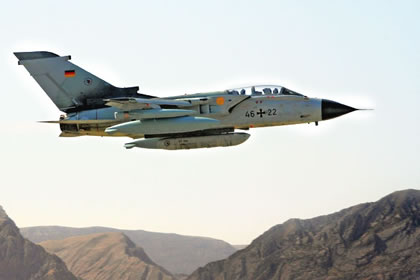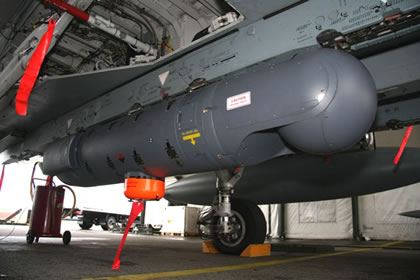Following the successful completion of Initial Operational Capability (IOC) qualification of the Reccelite tactical aerial recce pods with the German Air Force, the Luftwaffe is now equipping Tornado IDS fighters with the system. To be equipped with the first two Reccelite pods, are Tornados of AG51 ‘Immelmann’ Tactical Reconnaissance Wing. Recently deployed to join the rest of the squadron at Mazer e-Sharif airbase in northern Afghanistan, the aircraft will support USAF operations in-theater.

Tornado At this airbase, the Luftwaffe is operating a detachment of six recce-specialist Tornado IDS jets since April 2007. The new system, supplied by Israel’s Rafael Advanced Defense Systems, comes with pods, ground exploitation center and datalinks, supporting high operational tempo with two missions per day, providing ISAF commanders with near-real-time, day and night imagery of wide areas. Reccelite has already been fielded in Afghanistan by the Dutch Air Force on the F-16NLs.

The new pods are augmenting some 30 ‘wet-film’ recce pods operational since the 1990s. Developed by EADS, these older pods are currently operating in-theater, carrying two Zeiss KS153A wet-film optical cameras. The forward looking Trilense 80 system with three lenses and vertically positioned Pentalens 57 comprising five lenses, is covering horizon-to-horizon. An inflight rotateable KS-153 Telelens 610 telephoto can be installed in the fore section, for long-range oblique photography. In addition, the pod comprises the Honeywell infrared line scanner and Recce Management System (RMS) plus a digital data recording device from Ampex.


While these cameras provide excellent image quality and definition, the operation of the system is complex, requiring lengthy preparation, each sortie must be carefully planned and meticulously performed, as the cameras have to be manually aimed to capture the target area. After the mission. lengthy post-flight processing of the films means that analysis and distribution of recce products is delayed for hours, therefore limiting mission flexibility and efficiency.
In contrast to the older pods, the Rafael Reccelite is designed as a tactical recce system. Its multi-megapixel sensors made by Zeiss are mounted on a stabilized 3-axis gimbal, pointing the camera to the target, regardless to the aircraft position. Utilizing an on-board inertial navigation measurement unit, the payload optimizes the viewing angle and photo sequence, taking multiple images of the target area, providing users with digital, high-quality products in near-real-time. This process offers high flexibility and effectively covers diverse topography, including mountain slopes, urban areas and wide, open desert areas, all in a single sortie, providing detailed, high resolution digital imagery.The Tornados will be able to operate such missions at high speed, in low-and-medium altitude, with pod sensors automatically aimed at their objectives, regardless of the aircraft flight-path or maneuvering, therefore improving crew survivability and flight safety.
Next year the German detachment at Mazer e-Sharif will be augmented by three Israel Aerospace Industries (IAI) Heron I Medium Altitude, Long Endurance UAVs drones, and two ground stations, being leased by IAI. Although operated by the new UAV squadron of the 51st TRW, these UAVs will remain in Afghanistan, pending a final decision by the German Ministry of Defense (BwB), on the type of future UAV-MALE (Medium Altitude Long Endurance) procurement decision.



















